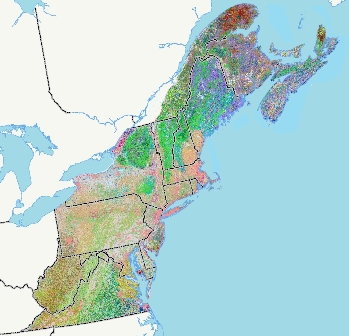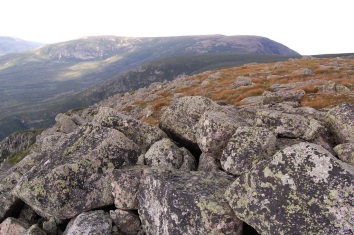”A game-changer for Conservation”
- Hector Galbraith, National Wildlife Federation
From the serpentine ridges of the Gaspe Peninsula to the limestone barrens of western Virginia, Northeast North America abounds in unique habitats. The extensive forests, thousands of wetlands, ancient mountains and coastal shoreline are home to over 13,000 species of plants and animals, and 83,000,000 people that rely on these resources for food, clean water, building materials, and recreation.
 “Ecologically logical and cartographically elegant"
“Ecologically logical and cartographically elegant"
-Dave Diamond, Missouri Resource Assessment Partnership and lead author on a 2014 study that evaluated the methods and outcomes for habitat classification and mapping in the Northeast and Midwest.
The map is based on over 4,000,000 data points and polygons, contributed by:
• US State Natural Heritage programs,
• Atlantic Conservation Data Centre,
• US Forest Inventory and Analysis,
• Provincial Forest Inventories (NS, NB, QC, PEI)
• Private Forest Inventories
A steering committee of over 40 US and Canadian guided the project.
The dataset maps the type and distribution of 140 types of forests, wetlands, unique communities and tidal systems, based on NatureServe’s “ecological system” concept.
For example:

Acadian- Appalachian Alpine Tundra
8,185 acres
ME, VT, NH, NY, NB, QC 98% Secured
Central Appalachian Cove Forest
1,014,832 acres
WV, VA, MD 37% secured
